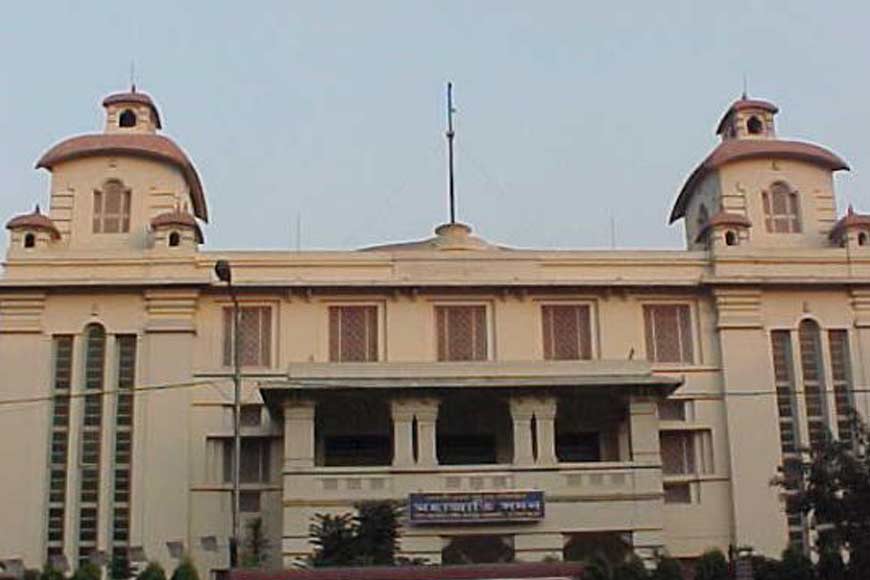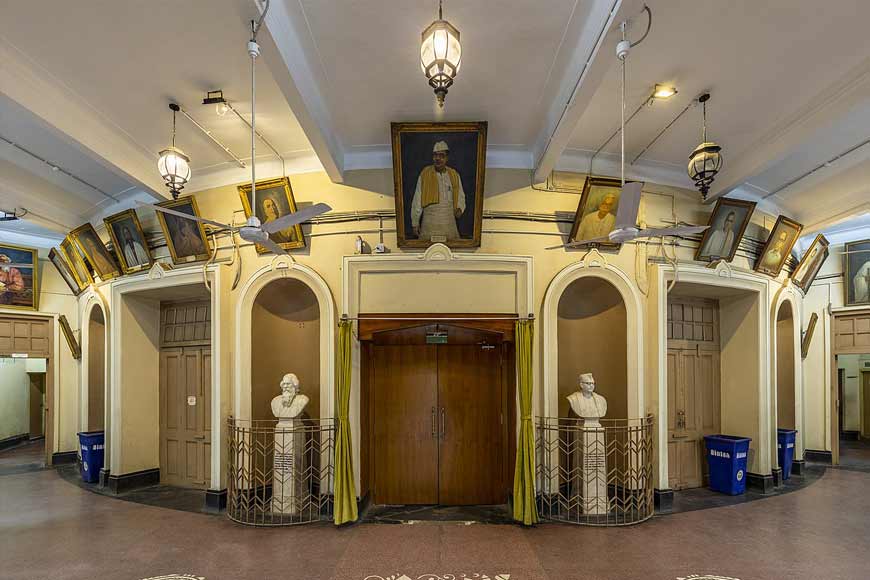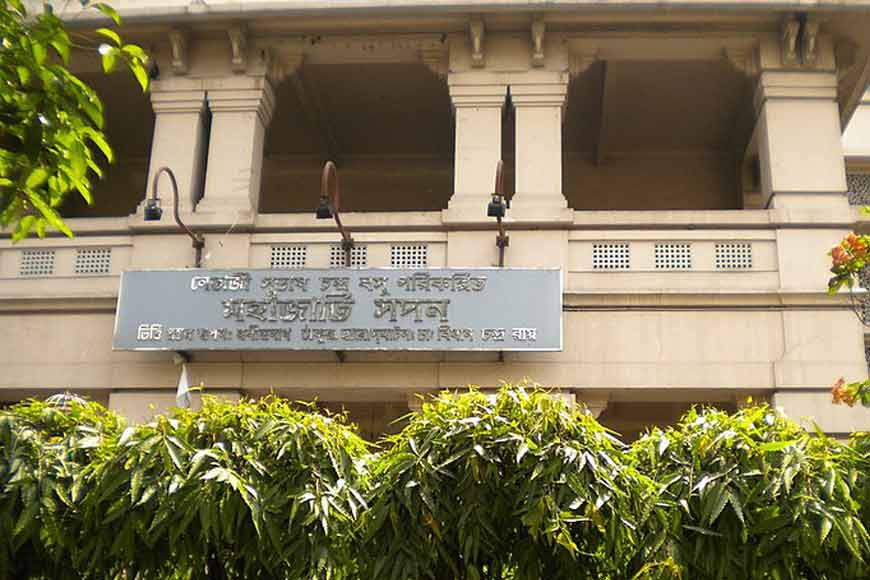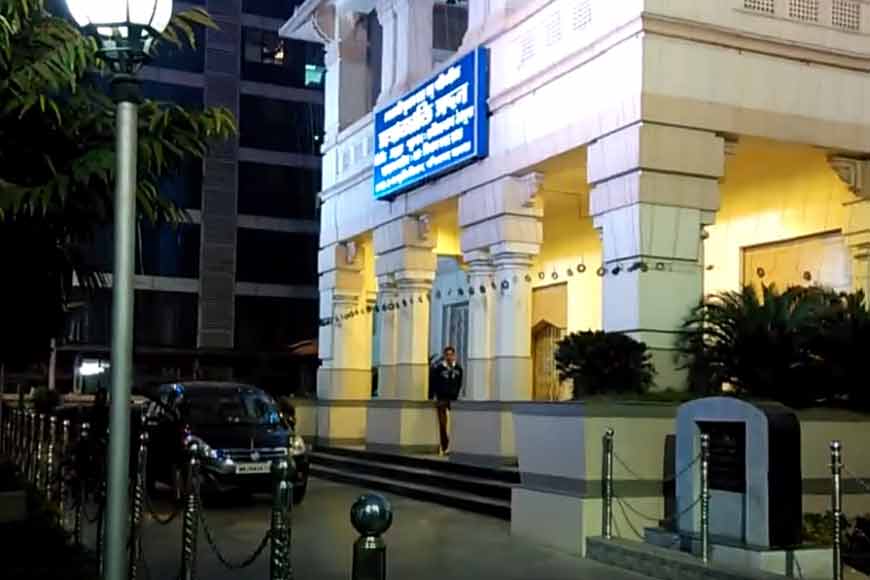It took years to build Mahajati Sadan, the dream project of Netaji - GetBengal story

Located at No. 166, Chittaranjan Avenue, Kolkata - 700007 (close to Mahatma Gandhi Road Metro Station, Raja Katra, College Street Market), Mahajati Sadan is a landmark heritage building that played a vital role in India's freedom struggle. It is a fully air-conditioned theatre with a capacity of 1309 seats. A cozy seminar hall with 160 seats is available for rent. The library attached to the theatre houses has rare research papers on social science, literature of freedom movement and Dr. B C Roy's personal collection of social sciences books, excluding medical books. The theatre usually conducts various cultural programs and exhibitions. On August 19 this year, the Government of West Bengal’s Information and Cultural department hosted a colourful programme to celebrate the 85th anniversary of this iconic monument.
 Photo gallery and the entrance to Sadan auditorium
Photo gallery and the entrance to Sadan auditorium
There is a riveting tale about how Mahajati Sadan was conceptualized and constructed. For this, we have to recall the turbulent times of the 1930s. Citing the violent revolutionary activities of Subhash Chandra Bose as problematic, British police arrested him near Bombay in March, 1936. After detaining him for a few weeks in Yeravda jail, the British administration took him to Kurseong in Darjeeling district and interned in the house of his own brother. Netaji’s arrest in 1936 was widely resented. In opposition to this action of the British administration, a series of public protests were organized in the country. The issue of vindictive treatment of Bose by the British government was raised by an adjournment motion in the Central Legislative Assembly. Public protests against the detention of Bose continued throughout the summer and autumn of 1936. Several motions were moved against his detention in Delhi Assembly and leaders like Nehru raised their voices in the Assembly in favour of his release. The detention of Subhash Chandra Bose was unanimously opposed throughout the nation, which ultimately resulted in his release, unconditionally on March 17, 1937.
After Subhas's release in March 1937, some of his friends, met in a conference and decided to raise a fund called Subhas Congress Fund. This was intended to contribute towards building an infrastructure for Provincial Congress work. A Committee was formed to plan this work. Subhas had planned for a building with a big hall, a stage, meeting room for the official of the Provincial Congress Committee, a library and a gymnasium. Bose banked heavily on the public for generating the rest of the fund. He applied to the Corporation of Calcutta in July 1938 for a lease of a plot in former Central Avenue (now renamed Chittaranjan Avenue). Calcutta Corporation agreed to grant the lease in August 1938. The building plan was sanctioned and Nobel Laureate poet Rabindranath Tagore was requested to lay the foundation stone of the building. He named it ‘Mahajati Sadan’ or the House of the nation.’
The date for the ceremony was fixed on August 19, 1940. Subhas Bose was already expelled from Congress for three years by the Working Committee. The anti-Subhas faction in Bengal did their best to dissuade the poet from participating in the ceremony. However, Rabindranath, despite his ill health, participated out of his personal love and respect for Bose. Netaji in his welcome speech said, "Gurudev, we welcome you as the High Priest in today's national festival, proceed to lay with your hands the foundation stone of Mahajati Sadan. Give your blessings so that we are able to make this the ‘House of the Nation’ the living center of all those beneficent activities which will bring emancipation of the individual and of the Nation, as well as the all-round development of India's manhood and nationhood. Bless us that we may hasten along the path that will lead to India's liberty and to our national self fulfillment.”
 Mahajati Sadan, a heritage building in Kolkata
Mahajati Sadan, a heritage building in Kolkata
The poet, in his address said, "Today in this great Hall of India we shall lay the foundation of Bengal's prowess but our strength will not lie in arrogant Nationalism, suspicious of friends and foes. We shall invoke Bengal's magnanimous heart of hospitality in which our humanity has liberation; we shall seek freedom in many sided cooperation." Gurudev also recited his popular poem, "Banglar Mati, Banglar jal" at the venue. The work of the construction of the building started shortly afterwards. However, the building work stopped abruptly when Netaji suddenly disappeared and was believed to have died in a plane crash.
After Independence, the Congress Party proposed Dr. Bidhan Chandra Roy's name as the Chief Minister of the newly formed state of West Bengal. One of the first tasks he decided was to fulfill Netaji’s dream project of completing the construction of Mahajati Sadan. Accordingly, the "Mahajati Sadan Act 1949" was enacted. This Act laid thrust on the continuance and completion of the erection of the Mahajati Sadan, for the maintenance, management and use thereof and for the creation of a body of trustees. The auditorium formally opened its gates to the public in 1958.

Busts of Subhash Chandra Bose and Rabindranath Tagore flank the entrance door to the Sadan auditorium. Hanging from the walls are paintings of Indian freedom fighters. Between the late 1970s and 1990s, winter was the time when Calcuttans headed towards Mahajati Sadan in large numbers to enjoy a three-hour long mesmerizing magic show by stalwarts like P.C. Sorcar Junior, K. Lal. A. Sarkar and others; singers of the golden era of Bengali music like Hemanta Mukhopadhyay, Shyamal Mitra, Sandhya Mukhopadhyay, Arati Mukhopadhyay, Nirmala Mishra, Manna Dey, Manabendra Mukhopadhyay would sing to an audience in raptures, Ustad Amjad Ali Khan performed with Suchitra Mitra, Gita Ghatak, Arghya Sen, Debabrata Biswas and a host of luminaries performed in the auditorium. One could just go on about the star-studded shows held at this illustrious venue at one time. Mahajati Sadan would be booked for months and most of the time tickets would be sold out.
The hall has lost much of its glamour and glitz as the number of world-class live shows have also dwindled. Nonetheless, the entire property is very well maintained and these days, office clubs hire the auditorium for their annual programmes or for political symposium. The majestic edifice continues to carry on its rich legacy.











